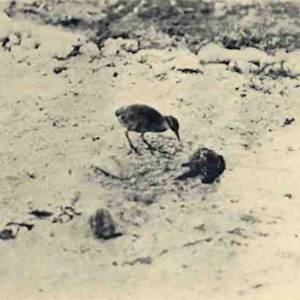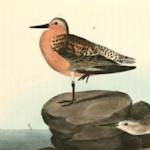Back from the Brink: Azores bullfinch
2008 CE • Portugal
Home to the Azores bullfinch, the São Miguel Island in the Azores was once covered in dense laurel forest before it was settled in the 15th century. "Today, after nearly six centuries of human habitation, most of the native vegetation is gone. Cultivated fields, pastureland and plantations of Japanese red cedar . . . now dominate the landscape." As the laurel forest cover disappeared, so did the endemic Azores bullfinch. The species was once "locally abundant in the nineteenth century and was slaughtered in large numbers by the island’s fruit growers who regarded it a pest of orange orchards . . . By the late 1970s, less than 40 pairs were estimated . . . In response to the plight of Europe’s rarest passerine, an EU-funded LIFE project was launched . . . The project ran from 2003 to 2008 and was coordinated by the Portuguese Society for the Study of Birds . . . The LIFE Priolo project successfully restored around 230 ha of laurel forest by removing alien species and establishing over 65,000 native plants." This led to the miraculous recovery of the Azores bullfinch. In 2008, a census of the Azores bullfinch was conducted, revealing the species had recovered to 775 individuals: triple the amount from just three years prior.
"Habitat restoration has led to the recovery of the Azores Bullfinch," BirdLife International, 2010.
Image: © Simon Mannweiler / Wikimedia Commons


Learn about Maya Lin’s fifth and final memorial: a multi-platform science based artwork that presents an ecological history of our world - past, present, and future.

Discover ecological histories and stories of former abundance, loss, and recovery on the map of memory.

Learn how we can reduce our emissions and protect and restore species and habitats – around the world.

See how art can help us rethink the problems we face, and give us hope that each one of us can make a difference.

Help make a global memorial something personal and close to home. Share your stories of the natural world.


